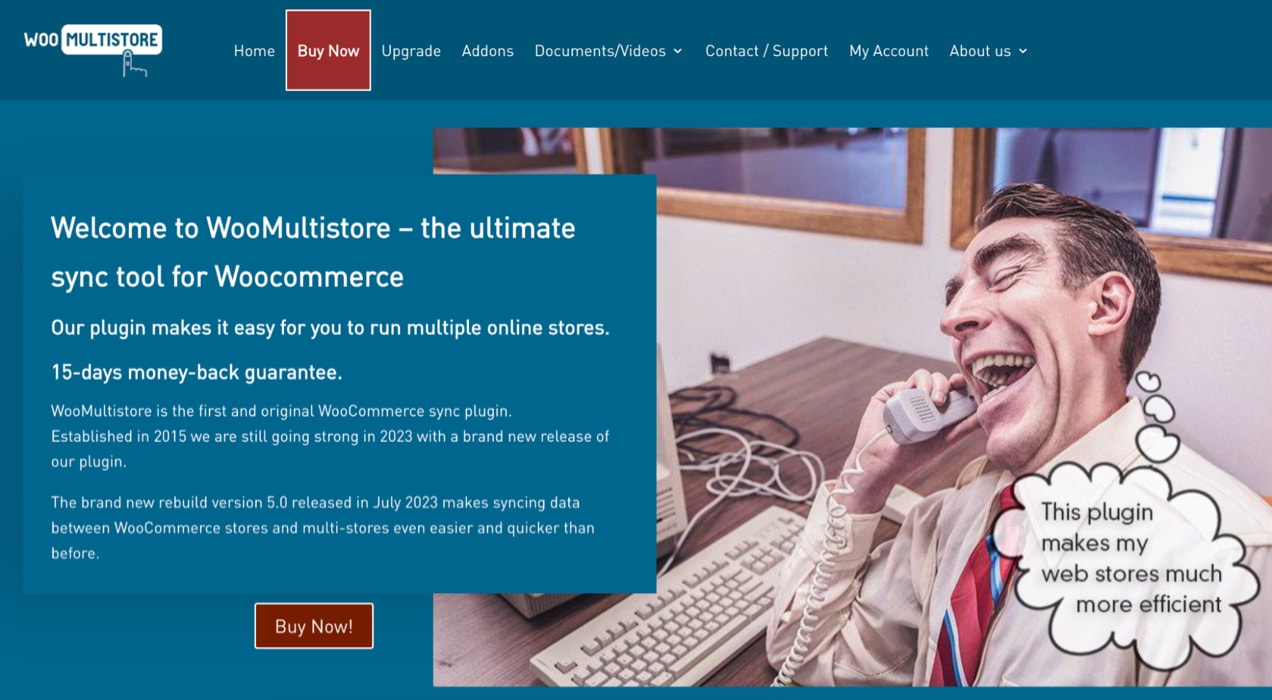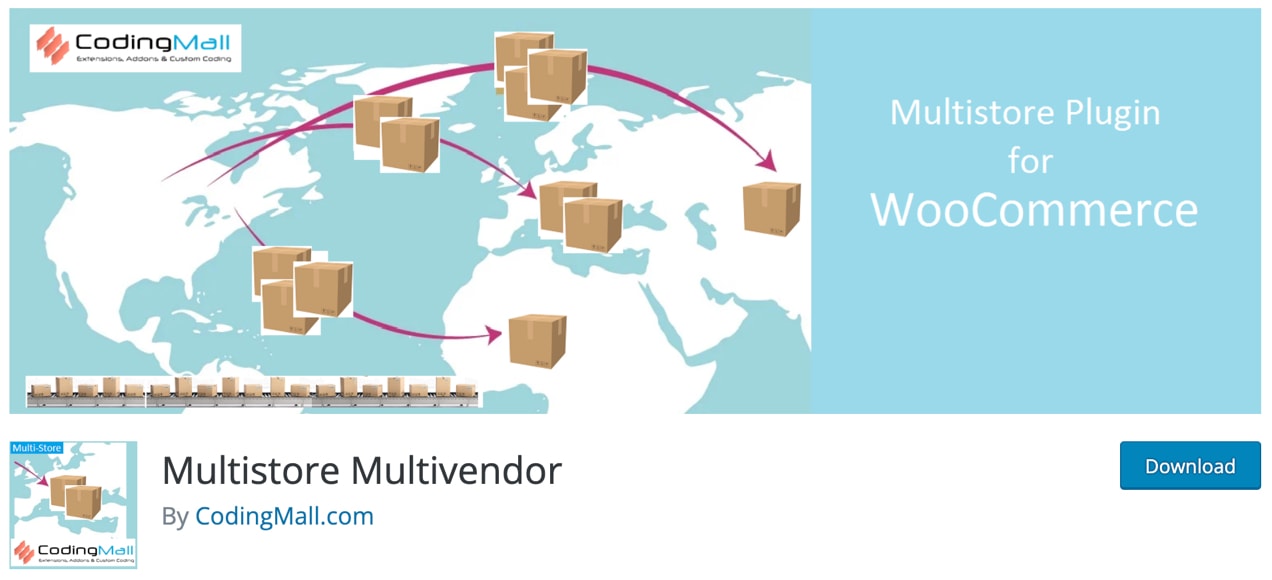If you’re juggling multiple WooCommerce stores, you know it’s no walk in the park.
But what if we told you there’s a way to make your life a whole lot easier? Smile and become an e-commerce online ruler with WooCommerce’s multi-store functionality – a real game-changer for managing multiple online shops with flair and finesse.
What is WooCommerce Multi-Store?
Think of WooCommerce multi-store as your e-commerce conductor. Just like an orchestra with different instruments, each of your online stores is a unique digital business card.
But here’s the kicker: you can harmonize them all from one master control – your WooCommerce installation. It’s like having a superpower to run multiple stores without breaking a sweat!
The Inner Workings: How Does Multi-Store eCommerce Work?
- One Installation, Multiple Stores: A single WooCommerce installation is the backbone for all your stores, simplifying maintenance and updates big time.
- Shared Database, Smoother Operations: All your stores share a database, making it super-efficient to manage information.
- Unique Stores, Unique Domains: Each store can flaunt its domain, giving you the liberty to target different markets with tailored strategies.
- Theme & Plugin Flexibility: Want a uniform look or distinct vibes for each store? WooCommerce’s got you covered. Customize to your heart’s content!
- Product Management with Precision: Tailor product ranges, pricing, and promotions for each store, catering to specific market needs with laser-sharp precision.
Why You’ll Love Multi-Store Functionality
- Centralized Control: Manage all your stores from a single dashboard. It’s like having a universal remote for your e-commerce empire.
- Cost Savings Galore: Sharing resources means more money in your pocket. Who doesn’t love that?
- Brand Consistency: Ensure a seamless shopping experience across all stores, strengthening customer loyalty.
- Marketing Mastery: Leverage cross-promotion and upselling across your network, boosting sales like never before.
- User Management Made Easy: Centralize user accounts for a smoother customer journey across your stores.
But Wait, There’s More – Overcoming Multi-Store Challenges
Sure, managing multiple stores comes with its own set of hurdles. We’re talking about complexities in setup, plugin compatibility, security concerns, and more.
But don’t sweat it! With the right expertise (hello, CoSpark developers!) and a solid strategy, these challenges are just small bumps on the road to e-commerce dominance.
How to Set Up Your WooCommerce Multi-Store
- Pre-Installation Prep: Check your hosting, decide on subdomains or subfolders, and get ready to roll.
- Backup and Update: Always back up your site before diving in.
- Enable WordPress Multisite: With a simple tweak in the wp-config.php file, you’re set for multiple WordPress websites.
- Set Up Your Network: Choose between subdomains or subdirectories and fill in the details.
- Admin Settings & WooCommerce Installation: Dive into the Network Admin menu and install WooCommerce for each site.
- Customize Each Store: Configure settings, products, and more for each store.
- Manage User Roles and Permissions: Ensure the right people have the right access.
Best Multi-Store WooCommerce Extensions
WooMultistore
WooMultistore is designed to empower businesses with multiple WooCommerce stores, making product management, synchronization, and overall store management a breeze.

Marketplace for WooCommerce
Marketplace for WooCommerce is a comprehensive theme designed with the future of e-commerce in mind.
Whether you’re building a multi-vendor marketplace or a boutique online shop, its features promise flexibility, ease of use, and a sleek, modern design.

Multistore Multivendor
The Multistore Multivendor extension for WooCommerce offers a transformative approach to e-commerce platforms, enabling multiple sellers to seamlessly showcase and manage their products within a single WooCommerce store.

Product Vendors
With Product Vendors for WooCommerce, businesses can leverage their established communities and sites to tap into new revenue streams.
Rather than focusing solely on product creation or development, the spotlight shifts to fostering a robust community around an ever-expanding marketplace.

Tips for Multi-Store Management
- Consistent Product Management: Use tools to sync your product catalog across stores.
- Customized User Roles: Fine-tune access for different team members.
- Strategic Customization: Balance uniformity and uniqueness across stores.
- Robust Backup Plans: Regularly back up your data to avoid any mishaps.
- Performance Monitoring: Keep an eye on site speed and uptime, and be ready to optimize.
Multi-Store FAQs
Can I have multiple stores on WooCommerce?
Absolutely! WooCommerce’s multi-store functionality is perfect for managing different online stores under one roof.
How do I sync stores with different currencies?
Specialized plugins can help you seamlessly manage multiple stores with different currencies.
What’s the difference between multi-store and multi-seller?
Multi-store is about managing multiple stores by yourself, while multi-sellers allow multiple vendors to sell on a single platform. Both have their unique perks, depending on your business model.
Start Your Multi-Store Journey
Taking on multiple stores might seem like an arduous task, but with WooCommerce, it’s a walk in the park.
The key to success? Partnering with the right team. CoSpark, with its seasoned WooExperts, is your go-to for WooCommerce Development and e-commerce website design.
Our post about That’s Why Outsourcing Your WooCommerce Maintenance Is Key for Growth speaks for itself.
With CoSpark‘s expert guidance, managing multiple stores becomes not just feasible but a true competitive edge.












